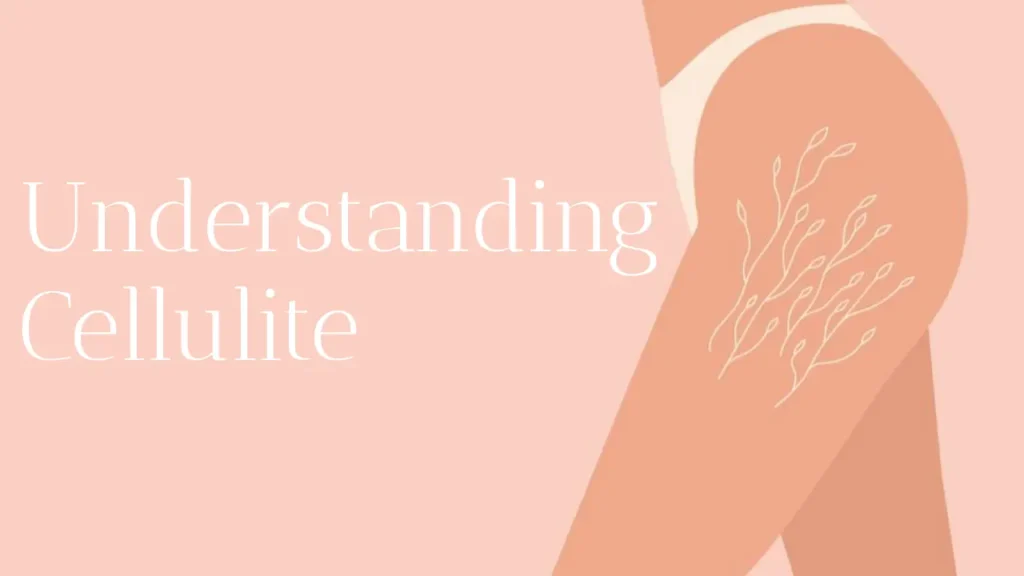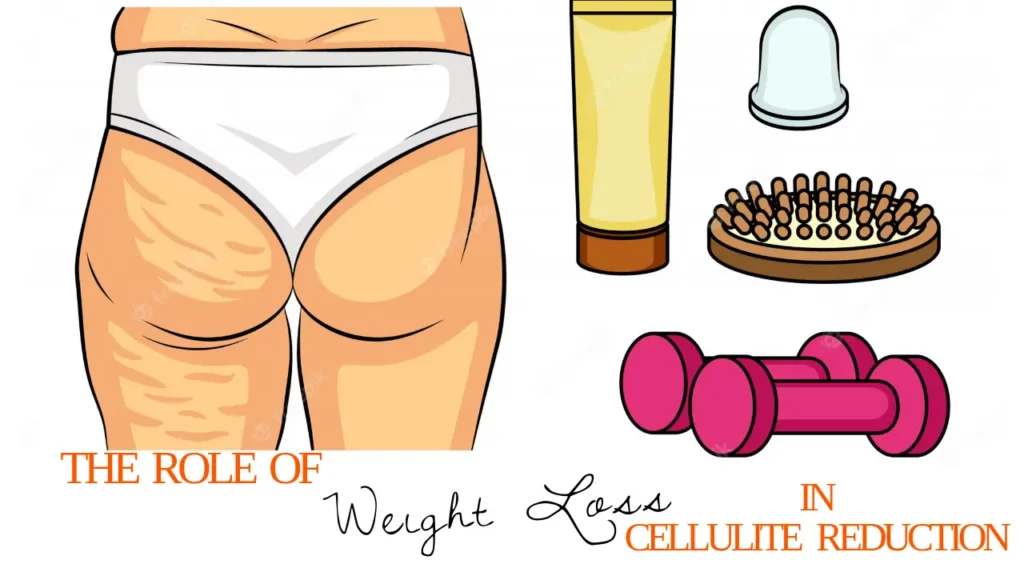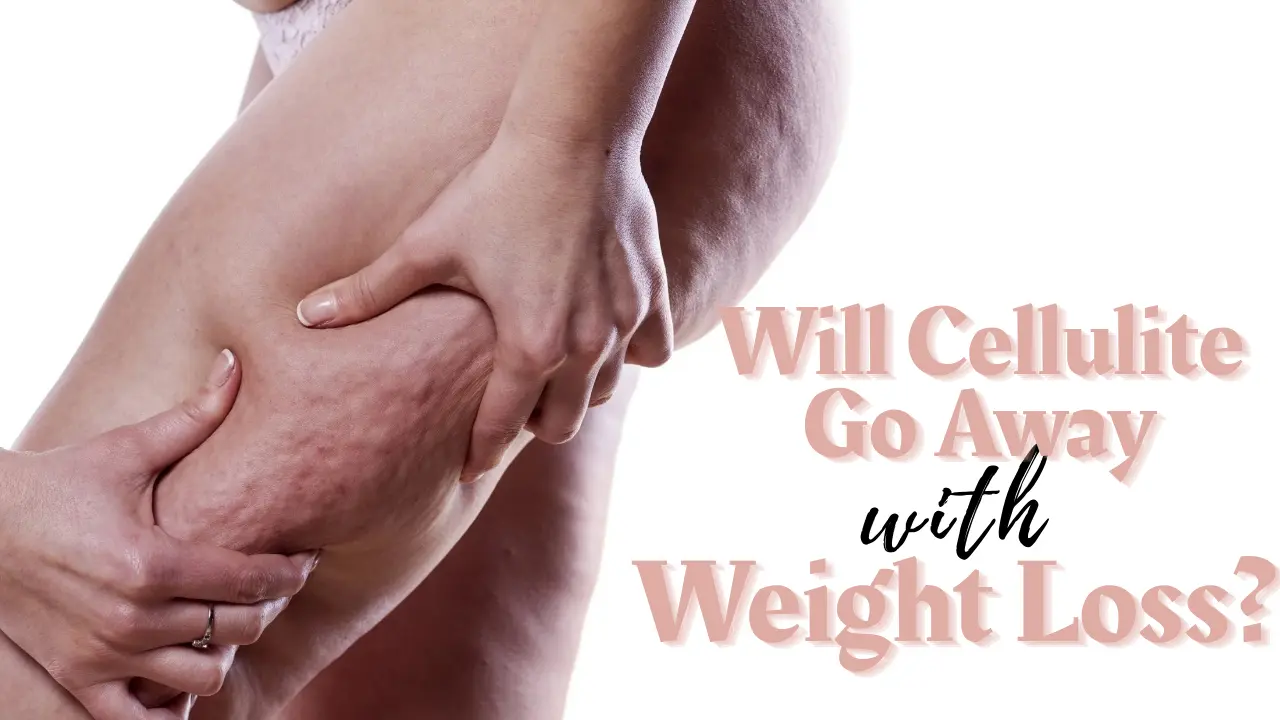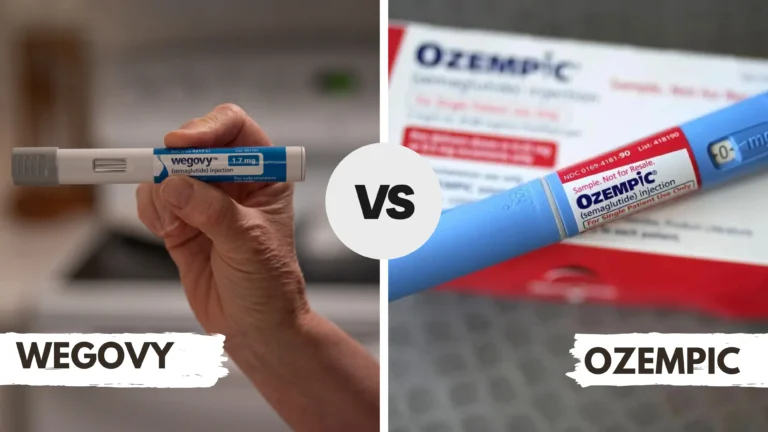Will Cellulite Go Away with Weight Loss?
Key Takeaways
- Cellulite is influenced by genetics, hormones, and body factors.
- Weight loss can help, but won’t fully remove cellulite.
- Diet and exercise are key for cellulite management.
- Treatments offer temporary or longer-lasting results.
- Cellulite can be reduced, but not entirely eliminated.
- A healthy lifestyle can visibly improve it.
Introduction
You may have come across cellulite that skin dimpling that is commonly observed on the buttocks and thighs. It occurs when fat deposits push through the tissue beneath your skin. Genetics plays a role, in the development of cellulite influencing factors such as metabolism, how fat is distributed, ethnicity, and circulation. Additionally following a diet that’s high, in fat and carbohydrates while lacking in fiber can exacerbate the visibility of cellulite.
Even though you put in the effort to lose weight, exercise, get massages, and use creams that claim to solve the problem cellulite can still be stubborn. It’s worth noting that genetics play a role, in its development in women after they hit puberty. While shedding some pounds can help improve how it looks by reducing the fat beneath your skin it might not completely get rid of it due to factors, like your lifestyle choices, hormones, and family history. It’s important to mention that there are treatments backed by professionals however they may not provide immediate or long-lasting results and could be quite expensive and time-consuming.
Understanding Cellulite

Have you ever wondered why cellulite appears when fat deposits push through the tissue, under the skin [1][6]? It turns out that in women the fat cells and connective tissue are arranged vertically in this layer. As a result, when fat cells break through the skin’s surface, it results in cellulite [1]. Interestingly men have a criss-cross tissue structure which may explain why they are less likely to develop cellulite compared to women.
Factors that contribute to cellulite development
Cellulite development is influenced by several factors.
- Diet and lifestyle: Your body’s cellulite formation can be influenced by the choices you make in your diet and lifestyle. Consuming a diet that’s high in carbohydrates, salt and fat but low in fibre can increase the chances of developing cellulite [3]. Additionally, leading a sedentary lifestyle can also raise the risk of formation [1].
- Hormonal factors: As women approach menopause and experience a decline in estrogen levels, the blood flow to the tissue beneath the skin decreases. Consequently, there is a reduction in collagen production [2]. On the other hand, various types of hormones play a crucial role in causing cellulite. Some of them are estrogen, insulin, noradrenaline, thyroid hormones, and prolactin [1][4][5].
Also Read: Oral Semaglutide for weight loss in non-diabetics
- Genetics: Certain genes play a vital role, in the development of cellulite. Moreover, genetic factors can impact a person’s metabolism rate, the way fat is distributed beneath the skin, ethnicity, and circulatory levels [3][1][6].
- Age: As individuals age, their skin gradually loses its elasticity becomes thinner, and becomes more susceptible to sagging. Consequently, the chances of developing cellulite increase [1][4].
- Sex and body type: Cellulite is more commonly experienced by women than men and tends to occur in areas such as the thighs, hips, and buttocks due to fat distribution patterns [4]. The severity of cellulite can be influenced by factors, like weight and muscle tone. It can even affect individuals who are otherwise very fit [7].
Common misconceptions about cellulite and weight loss
Common misconceptions about cellulite and weight loss include:
- Losing weight will completely eliminate cellulite: The effectiveness of weight loss, in getting rid of cellulite is limited. While losing pounds can reduce the fat beneath the skin and enhance its smoothness it cannot completely eliminate cellulite due to its complex origins [8][11][12][6].
- Exercise alone can get rid of cellulite: Although exercise can improve muscle tone and cardiovascular health, it cannot eliminate the visibility of cellulite [9][10][12].
- Liposuction is an effective treatment for cellulite: Contrary to belief liposuction is not an effective treatment, for cellulite. Research has shown that liposuction may even worsen the condition [9].
Takeaway
Cellulite is mainly a result of fat cells pushing through the connective tissue beneath the skin. Various factors such, as diet, hormones, genetics, age and sex play a role in its development. However, it’s important to note that misconceptions exist regarding its elimination through weight loss and exercise or through liposuction, as a treatment option.
The Relationship Between Cellulite and Weight

How weight gain can worsen cellulite appearance
When you put on weight it can make cellulite more apparent. As you gain weight, the fat cells expand in your body. Push against the tissue under your skin. This causes the tissue to weaken and stretch. As a result, cellulite becomes more noticeable to you. Moreover when you gain weight the larger fat cells can make cellulite more visible [13]. Therefore, it’s important to manage your weight to minimize its impact, on your body.
The impact of body fat distribution on cellulite
The way body fat is distributed can affect how cellulite appears on parts of the body [1][3]. Women often notice cellulite frequently in areas where fat is distributed vertically such as the thighs and buttocks [7]. On the other hand, men tend to have a crisscross pattern of distribution which might explain why they are less likely to develop cellulite compared to women [7]. It’s important to understand that the severity of cellulite can also be influenced by factors, like weight and muscle tone. Even individuals who are physically fit may still experience it [3]. By understanding your body distribution and considering factors, like weight and muscle tone you can effectively manage the appearance of cellulite.
Role of hormones and genetics in cellulite and weight gain
Hormonal imbalances and genetic factors play a significant role in cellulite formation and weight gain [7][1]. Hormones such as estrogen, insulin, noradrenaline, thyroid hormones and prolactin contribute to the development of cellulite [1]. As women approach menopause, the decrease in estrogen levels can result in reduced blood flow to the connective tissue beneath the skin and a decline in collagen production [1]. Moreover, genetics influence variations in metabolism rate fat distribution beneath the skin, ethnicity and circulatory levels [7][1][14].
Takeaway
Gaining weight can make cellulite more noticeable as the fat cells expand and put pressure on the tissue. The distribution of body fat, hormones and genetics also play a role, in how cellulite appears and how weight is gained.
The Role of Weight Loss in Cellulite Reduction

Can weight loss eliminate cellulite?
To lessen the visibility of cellulite it’s crucial to understand that weight loss can make a difference. It won’t completely eradicate it. Cellulite exists in the fatty tissue, beneath the skin. When you shed pounds, it merely reduces the size of the cells without entirely eliminating them. Thus to effectively manage cellulite, your main focus should be, on maintaining a healthy weight over time. Nevertheless, this approach can help to minimize its appearance even though complete elimination may not be achievable. By being mindful of your weight and embracing a healthy lifestyle you can positively influence how cellulite appears on your body.
Also Read: Adipex: Can Adipex Cause Constipation?
Case studies and research on cellulite and weight loss:
Various studies have shown that shedding pounds can potentially improve the appearance of cellulite. However, it’s worth noting that the outcomes are not always consistent [14]. While some women may notice a change, in their cellulite after losing weight others might not see any difference. Even experiencing a worsening of the condition [15][8]. It’s important to understand that the level of improvement tends to be more significant in women who start with higher body weight and have severe cases of cellulite [15]. Therefore, if you’re considering weight loss as a way to manage cellulite remember that individual responses can vary and visible improvements are more likely for those, with higher initial body weight and severe cellulite.
How weight loss affects cellulite visibility:
To minimize the visibility of cellulite, it’s important to understand that losing weight can be helpful. In addition, when you shed pounds it reduces the amount of fat, beneath your skin. That gives you a smoother look [15] [11]. However, it’s important to note that weight loss alone may not get rid of cellulite due to its complex combination of factors [14][7]. Additionally, it’s crucial to approach weight loss with caution and avoid rapid methods as they can actually impact oppositely by making cellulite more noticeable. Moreover, losing weight quickly may lead to a loss of muscle tone and skin elasticity [10] which can worsen the appearance of cellulite. That’s why adopting sustainable weight loss methods, along with other strategies is more effective in managing cellulite and improving overall skin texture.
Takeaway
Weight loss can help diminish the visibility of cellulite by reducing the fat beneath the skin. However, it’s important to note that complete elimination of cellulite is unlikely and the results may vary depending on factors such, as initial body weight and the severity of cellulite among individuals.
Practical Tips for Cellulite Reduction through Weight Loss

Healthy weight loss strategies
Healthy weight loss strategies include:
- Find an approach that works for you: Losing weight in a manner takes time and consistency. Therefore, it is important to find an approach that not only makes you feel good but also keeps you motivated, throughout the process.
- Set personalized goals: Before you start your weight loss journey, make sure you have an understanding of the goals and objectives you want to achieve. Set attainable goals. Gradually introduce lifestyle changes to lose weight and maintain it in the long run.
Also Read: When Wegovy Doesn’t Work?
- Eat a balanced diet: Having food (fruits, vegetables, whole grains, and lean protein) can help you in the reduction of visibility of cellulite. Furthermore, it is advisable to steer off diet plans that eliminate whole food categories or drastically restrict calorie intake as they can prove challenging to adhere to over an extended period.
- Incorporate physical activity: In a balanced weight loss strategy, it’s important to include exercise. To find the activities you enjoy and easily fit into your routine, try options such as walking, swimming, playing tennis, or even joining exercise classes with a group of people.
- Make permanent lifestyle changes: The researchers recommended that you make changes to your lifestyle and adopt healthier habits if you want to achieve lasting weight loss. Besides, it is essential to seek out reliable information sources and support from healthcare professionals, registered dietitians or weight loss programs. These resources can significantly help you in achieving your desired goals.
Diet and nutrition for cellulite reduction
Consuming a diet high in fat, carbohydrates and salt while lacking in fibre can contribute to the development of cellulite [16]. However, incorporating a balanced diet that includes an abundance of fruits, vegetables, whole grains, and lean protein can aid in reducing the visibility of cellulite. Additionally, maintaining hydration by drinking an amount of water can enhance the appearance of the skin. Including foods with antioxidants, such as berries, leafy greens, and nuts, can also improve the texture of the skin [17].
Also Read: Does cellulite go away with weight loss and exercise?
Exercise routines that target cellulite-prone areas
Overall cardiovascular health and muscle tone can be enhanced by engaging in regular physical activities. But it is mentionable that, physical exercises cannot completely eliminate the visibility of cellulite [18][19]. However, focusing on the targeted workouts like squats, lunges, leg curls, leg presses, etc. might help you to alleviate the noticeability of cellulite in areas like thighs, buttocks, and hips. Moreover, incorporating strength training, into your fitness routine can contribute to muscle growth and improve your overall body composition [17].
Takeaway
Achieving a gradual and sustainable weight loss by setting personalized goals, maintaining a balanced diet, engaging in regular physical activity, and making permanent lifestyle changes can reduce the visibility of cellulite. Additionally, consuming a diet that includes plenty of fruits, vegetables, whole grains, lean protein, and staying hydrated can help improve the appearance of your skin.
Other Strategies for Cellulite Reduction

Non-weight loss approaches to minimize cellulite
If you want to lessen cellulite’s visibility, several options are worth considering. Firstly, regularly massaging the affected areas can be helpful. It aids in breaking down the deposit fats and improving blood circulation. Moreover, incorporating skincare products that contain ingredients like caffeine, retinol, or antioxidants can also be beneficial. These ingredients enhance the skin’s texture and reduce cellulite [17].
Additionally, non-invasive procedures like laser treatment, radio frequency therapy and ultrasound have shown results in minimizing cellulite [20]. Even though these procedures might provide you with some results for a short period [20], by integrating these methods into your skincare routine, you can work towards achieving-looking skin while reducing the appearance of cellulite.
Massage and skincare treatments for cellulite
If you’re looking to address cellulite one option is to try massaging the areas. Massaging can help improve circulation and temporarily reduce the visibility of cellulite [21]. Another approach worth considering is skincare treatments, like laser or radio treatments. These treatments can enhance the texture of your skin. Minimize the appearance of cellulite [22]. It’s important to keep in mind that these treatments aren’t solutions. They can be effective in the short term [22]. Therefore incorporating treatments into a routine for managing cellulite may help achieve improvements in its appearance, on the body.
Medical interventions and their effectiveness:
If you’re looking to tackle cellulite, it’s good to know that there are FDA-approved treatments that you can consider. One option is Cellfina, which works by cutting the bands of connective tissue responsible for those pesky cellulite dimples [21]. The great thing about this treatment is that you can expect lasting results, with improvements lasting up to three years [21]. Another FDA-approved alternative is Cellulase, which uses laser technology to target cellulite. By releasing the fibrous bands and stimulating collagen production, Cellulase offers results that can last for a year or longer [21].
On the other hand, if you’re looking for an injectable treatment, you might want to explore Qwo. It specifically targets the causes of cellulite [7]. This treatment works by breaking down the fibrous bands and redistributing fat cells, giving results that can last up to a year [7]. However, it’s important to remember that these treatments and medical interventions are not solutions. While they can enhance the appearance of cellulite, ongoing maintenance treatments may be necessary to sustain the results [17][20][21][22] [7]. Therefore, periodic therapies should be considered to maintain the effects achieved through these interventions.
Takeaway
There are methods to reduce the appearance of cellulite, such as massages, skincare products, and non-invasive treatments like laser and radio frequency procedures. Besides, medically and FDA-approved ways, like Cellfina, Cellulaze and Qwo. While these approaches can provide improvements, it’s important to note that maintaining the results may require care.
Conclusion
To summarise, cellulite is a skin condition that occurs when fat deposits push through the connective tissue beneath the skin. Genetics, hormones, age, gender and body type influence it. While people try approaches like weight loss exercise and topical treatments, eliminating cellulite is problematic because of its complex nature.
Losing weight can help improve the appearance of cellulite by reducing fat although it doesn’t guarantee elimination. People who have higher initial body weight and severe cellulite tend to see significant improvements. However it’s important to avoid rapid weight loss as it can potentially worsen cellulite by impacting muscle tone and skin elasticity loss.
To deal with cellulite, maintain a rounded diet, engage in exercise, and aim for sustainable weight loss. Additionally, focusing on activities or exercises that target cellulite areas can be beneficial. Temporary reduction in the appearance of cellulite can be achieved through massage and skincare treatments. However, medically proven treatments like Cellfina, Cellulaze, and Qwo are available for lasting results. It’s important to note that periodic maintenance will be required to sustain these results.
Although it may not be feasible to eliminate cellulite, you can make a difference in reducing its visibility and enhancing the texture of your skin by embracing a healthy lifestyle, integrating specific exercises and exploring potential medical interventions.
FAQ
Q. Does cellulite go away with weight loss?
A. No, cellulite doesn’t completely disappear with weight loss. It might become less noticeable.
Reference
1) Crosta, P. (2023, June 14). Everything you need to know about cellulite. https://www.medicalnewstoday.com/articles/149465
2) Clinic, I. (2021, May 18). The Fight Against Cellulite: Why You Get It and How to Get Rid of It. Why You Get It and How to Get Rid of It. https://www.iowaclinic.com/medical-spa/the-fight-against-cellulite-why-you-get-it-and-how-to-get-rid-of-it/
3) Wikipedia contributors. (2023). Cellulite. Wikipedia. https://en.wikipedia.org/wiki/Cellulite
4) Cellulite – Symptoms and causes – Mayo Clinic. (2021, November 3). Mayo Clinic. https://www.mayoclinic.org/diseases-conditions/cellulite/symptoms-causes/syc-20354945
5) News-Medical.net. (2022, September 2). What causes cellulite? https://www.news-medical.net/health/What-Causes-Cellulite.aspx
6) Bass, L. S., & Kaminer, M. S. (2020). Insights into the Pathophysiology of Cellulite: A review. Dermatologic Surgery, 46(1), S77–S85. https://doi.org/10.1097/dss.0000000000002388
7) Tokarska, K., Tokarski, S., Woźniacka, A., Sysa-Jędrzejowska, A., & Bogaczewicz, J. (2018). Cellulite: a cosmetic or systemic issue? Contemporary views on the etiopathogenesis of cellulite. Postepy Dermatologii I Alergologii, 35(5), 442–446. https://doi.org/10.5114/ada.2018.77235
8) Nesterova, Y. (2020). Will cellulite go away with weight loss? GUAM Beauty. https://guambeauty.com/blogs/news/will-cellulite-go-away-with-weight-loss
9) 8 Common Myths about Cellulite: Heripsime Ohanian, PhD, MD, FACOG, DABRM, DABLS: Aesthetic specialist. (n.d.). https://www.bergen-aesthetics.com/blog/8-common-myths-about-cellulite
10) Malacoff, J. (2023). Everything you ever wanted to know about cellulite. Shape. https://www.shape.com/weight-loss/management/what-cellulite
11) Bishop, S. (2023). Could losing weight make cellulite less visible or get rid of it altogether? Mayo Clinic News Network. https://newsnetwork.mayoclinic.org/discussion/losing-weight-may-make-cellulite-less-visible-but-it-wont-go-away-altogether/
12) Gillette, B., & Igoe, K. J. (2023, August 7). How to get rid of cellulite: 14 tips and products from dermatologists and plastic surgeons. Cosmopolitan. https://www.cosmopolitan.com/style-beauty/beauty/g3704/how-to-get-rid-of-cellulite/
13) LaserAway. (2015, February 16). Cellulite: The inside Story – LaserAway. https://www.laseraway.com/articles/body-contouring/cellulite-the-inside-story/
14) What you need to know about cellulite. (2015, July 30). https://www.acefitness.org/resources/everyone/blog/5569/what-you-need-to-know-about-cellulite/
15) AdminAst. (2021, October 26). Will Losing Weight Automatically Reduce Cellulite? Will Losing Weight Automatically Reduce Cellulite? https://www.endosystems.us/endermologie-cellulite-treatment-blog/will-losing-weight-automatically-reduce-cellulite/
16) Healthy weight loss. (2023, June 15). Centers for Disease Control and Prevention. https://www.cdc.gov/healthyweight/losing_weight/index.html
17) Nao. (2023a). How to lose weight and cellulite- Nao medical. naomedical.com. https://naomedical.com/info/how-to-lose-weight-and-cellulite.html
18) National Academies Press (US). (2004). Weight-Loss and maintenance strategies. Weight Management – NCBI Bookshelf. https://www.ncbi.nlm.nih.gov/books/NBK221839/
19) Weight loss: 6 strategies for success. (2021, December 7). Mayo Clinic. https://www.mayoclinic.org/healthy-lifestyle/weight-loss/in-depth/weight-loss/art-20047752
20) Health.com /Amanda MacMillan. (2014, April 26). 15 Myths and facts about Cellulite. Time. https://time.com/77632/15-myths-and-facts-about-cellulite/
21) Sachin M. Shridharani, MD – LUXURGERY©. (2022, June 24). QWO cellulite treatment in NYC | LUXURGERY© NYC. LUXURGERY© NYC. https://www.luxurgerynyc.com/minimally-invasive-cosmetic-procedures/cellulite-treatment/
22) Awesome. (2023, July 18). Exploring the benefits of endermologie for reducing the look of cellulite – Orlando Liposuction Specialty Clinic. Orlando Liposuction Specialty Clinic. https://www.orlandoliposuction.com/blog/exploring-the-benefits-of-endermologie-for-reducing-the-look-of-cellulite/







